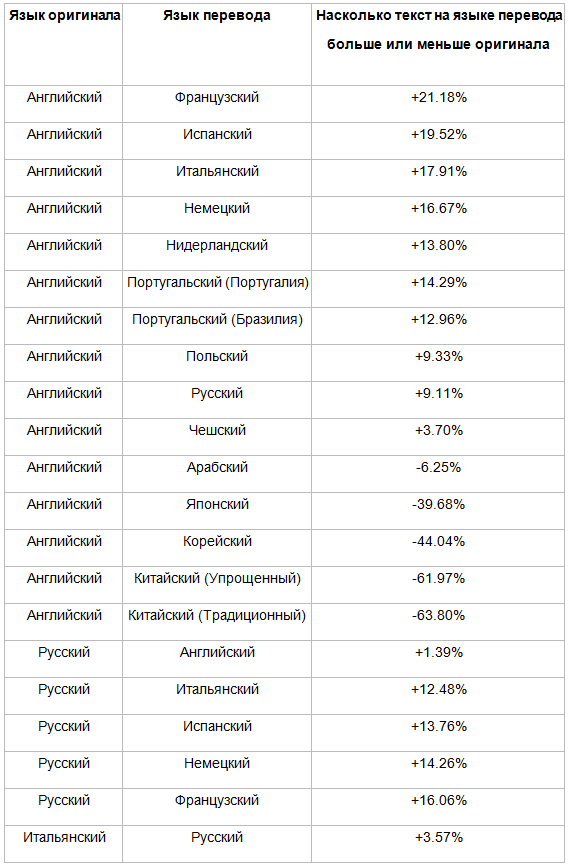Translation from Chinese: localization problems from Mandarin
Based on their own experience, as well as the performance of one of the presidents of Reality Squared Games, the Russian company 101XP specifically for App2Top.ru I have prepared a material about solving the most pressing problems when translating from Chinese.

In a couple of years, the Chinese mobile games market has turned from an object of attention of Western companies into one of the most active and aggressive actors in the global industry. Now it is no longer the leaders of Western markets who are looking at guests from the east, but Chinese majors to the largest companies of the old and new world.
The situation is mirrored with games. If a year ago American and European hits timidly entered the virtual shelves of local markets in China, bursting with local budget slag, now we are more and more often faced in our Western regional markets with localizations of Chinese projects, often not inferior in quality to the projects of leading studios in North America and Europe.
It is obvious that this year the trend will increase. There will be much more Chinese projects in the West. In light of this, for many, it is quite possible, an actual way of further development (one of the possible ways of business diversification) there will be cooperation with Chinese developers.
This text is dedicated to such teams, written based on the speech of Shaun Newcomer, vice president of the Shanghai office of Reality Squared Games, at GDC 2015.
The main problems of Asian projects
1. The translation does not fit in the UI
As a rule, two, or at least three Cyrillic (or Latin) characters are placed in the place of one Chinese character. However, in practice, when translating, one hieroglyph turns into about 7-8 characters. And this is already taking into account the principle of “brevity is the sister of talent.” This leads to the fact that the labels fit on top of each other or go beyond the windows and buttons.
The solution to the problem:
Translate the game into German (due to the large length of words), insert the translation into the game, make a report on all the problem areas and send it to the developers for correction, and only then, step by step, add the remaining languages.
The ideal situation is when developers specify the maximum number of characters in each line, as is already customary in reputable Western companies, since it is impossible to understand from the lockit whether this will be a scroll window (which means that the text will fit more than an example), whether it is technically possible to split the translation into two lines, and so on.
Just below is a table showing how much, on average, more/less space the text takes up, depending on the language used.
2. Lack of lockit standard
The second problem is that there is no single lockit standard. In an ideal situation, the publisher receives a lockit in the form of an excel file, translates the text into the desired language, gives it to the developers, and they integrate from their side.
In reality, you have to translate not one large lockit, but many small ones, sometimes with a bunch of inconvenient bookmarks, and the text can also be illogically and carelessly scattered across files. Plus, do not forget about the inscriptions on the textures, with which there is also a lot of hassle — you need to either redraw them, or translate another lockit, in which the inscriptions on the textures will be indicated (then they will need to be transferred to developers for embedding). It comes down to time and money.
The solution to the problem:
The best solution is to find out from the developers as early as possible in what format the lockit is provided, and be prepared for upcoming problems, perhaps agree on a more convenient format of the lockit – this will help save a lot of time and nerves. It will not work to reset the problem to automatic translation systems (for example, Trados) — they still do not know how to work normally with Chinese games.

Alexey Levashov, Head of the 101XP Release Department
Usually lockits come in the form of excel files. It is more convenient to work with one large file, in which the entire text is collected at once. It often happens that a developer can send several dozen such files, which significantly complicates the work, especially if there is no clear structure. Or, even worse, the files may not be in Excel, but in xml. In this case, the task becomes more complicated, because the text that is “useful” for translation and editing is framed by tags and service information that are useless to us. In this case, the translator may accidentally delete one parenthesis, and the entire file will be corrupted. Here, of course, self-written text extraction programs will come to the rescue, but it takes time to create them.
A separate question on the localization of the graphic component of the project: icons, buttons, inscriptions, etc. The main problem is again in what form the developer provides it for localization. Ideally, it can be a separate Excel file, allocated only for graphics, where, in addition to the lines for translation, there are also original images with an example of where these images are used in the game. This allows you to immediately understand the context and the character restriction. A much more inconvenient option for providing a graphic lockit is when they send just a set of graphic files, for example, png. In this case, you have to enter them in Excel in the form of pictures and write a translation opposite each one. In this case, you will have to translate manually from the screen, which increases the working time.
3. The plot of the game
Chinese browser games are not distinguished by a fancy plot. Of course, no one expects a dashing storyline of the AAA-level project from them, but sometimes there are cases when the plot in the game is absent as such, or appeals to the peculiarities of Asian culture that are incomprehensible abroad.
Solving the problem:
As part of this problem, you can independently “refine” the plot of the game, since you have lockits. Be guided by Western culture, even if you release the game, for example, in Turkey or Brazil — it’s still closer in spirit to them. If you are not constrained in time and money — refine the plot for each region separately.

Maxim Anchugov, Lead Manager of 101XP Release Department
To a greater extent, this is a developer-only solution. At the moment we are working on a Chinese game that the developer has independently adapted for the Western market, changing the setting and even changing the “skin”. Of course, you can also famously change the plot on the translator’s side, but all this is more suitable for retail games. Online, with a constant lack of developer time (and he is working on many versions of the game at the same time), all this risks collapsing at the first written update, which, of course, was not aware of the translator’s fantasies.
4. Differences in quality standards
Chinese teams are focused on the fastest possible start, and this entails a number of problems. Yes, the game starts, the main functionality works, but the rest is completed in the process (in the view of the Chinese, text errors and “non-intrusions” are not a big problem). Plus, the priority for fixes for the versions of the game for the domestic market is always higher for the Chinese.
The solution to the problem:
Here it is necessary not to hesitate to insist on solving emerging problems and constantly remind about it, appealing to the fact that this affects the fall / growth of revenue.

Maria Junger, Editor-in-Chief of TrueDubbing Studio
Chinese developers are very bad at translating their games into English — without a glossary and a general editor. Localization requires an editor with knowledge of Chinese, who will check the same five similar English expressions — or something different.

Fedor Bonch-Osmolovsky, Managing Partner of Levsha Localization Studio
The love of uniformity is not one of the virtues of Chinese developers. Even if you are working with the original Chinese text, there is no guarantee that the objects of the game world and game concepts will be named uniformly. But if you happen to translate a Chinese game from English, the situation becomes quite sad. Before starting localization of such projects, I would recommend to “tweak” the translation from Chinese to English, using automatic search tools for different translations for the same strings (XBench, Verifika), and also, if it was possible to get a Chinese-English glossary from the developers (or compile it yourself, if, again, lockit allows you to separate pieces of text, at least basic things like names and titles), to check the uniformity of the translation of these terms from Chinese to English and take this factor into account when compiling a Russian glossary, adding additional versions of the English term to it.
5. Constantly changing in-game content
There are situations when updates can suddenly result in a “combat” server, and the project manager is confronted with this fact, leaving no time for testing, localization and preparing the community for changes.
The solution to the problem:
Take it for granted.
6. Monetization for the Asian market
The mentality of Asian gamers is very different from that of Western players, and not all monetization models and prices for in-game purchases that bring profit in their home market are suitable for exploitation abroad.
The solution to the problem:
The company’s staff should have a good analyst who is able to analyze the in-game economy as quickly as possible, identify the most acute and unsuccessful monetization models and give the first recommendations for its improvement. Your main task is not to squeeze the maximum amount of money out of the game in a short period (it just won’t work), but gradually, step by step, improve the in—game economy and keep the game afloat.
7. Lack of attention to the launched project from the developers
Developers tend to “forget” about the project for a while, throwing all their efforts at finalizing it for the domestic market, while bugs in the Western version are not repaired, updates do not come on time, and the game is slowly stagnating.
The solution to the problem:
By signing the contract, you, the publisher, have agreed with the developers on certain amounts, the number of players, servers and revenue. Take out the contract, demonstrate it to the developers and gently but firmly remind them that without their help, the goal cannot be achieved. Do not wait for the weather by the sea — at the first delays, start this conversation. Is your contact responding badly? Contact his superiors — the “vertical” leadership system in China works wonders.
Nikita Knyazkov, Head of Operations Department at 101XP
It cannot be said that all Chinese workers have a stereotypical “Chinese” attitude to work — in our lifetime we have seen both operational managers who worked 14-16 hours a day just to solve as many issues as possible, and employees with whom it took several hours to “negotiate” some meager refunds to players for unexpected downtime and missed events, simply because it’s extra work.
In any case, do not expect that most of the initiatives will come from your partner — the Chinese do not really like changes. This means that basically you will have to work with an already established game, in which new content is gradually (extremely slowly) introduced.
However, this also has its advantages: most Chinese games are a ready—made set of dozens of game events that change every week. There are so many things to do on a daily basis in games that players may not pay attention for months to the absence of significant changes or content patches, which, however, always give a significant increase in revenue.

